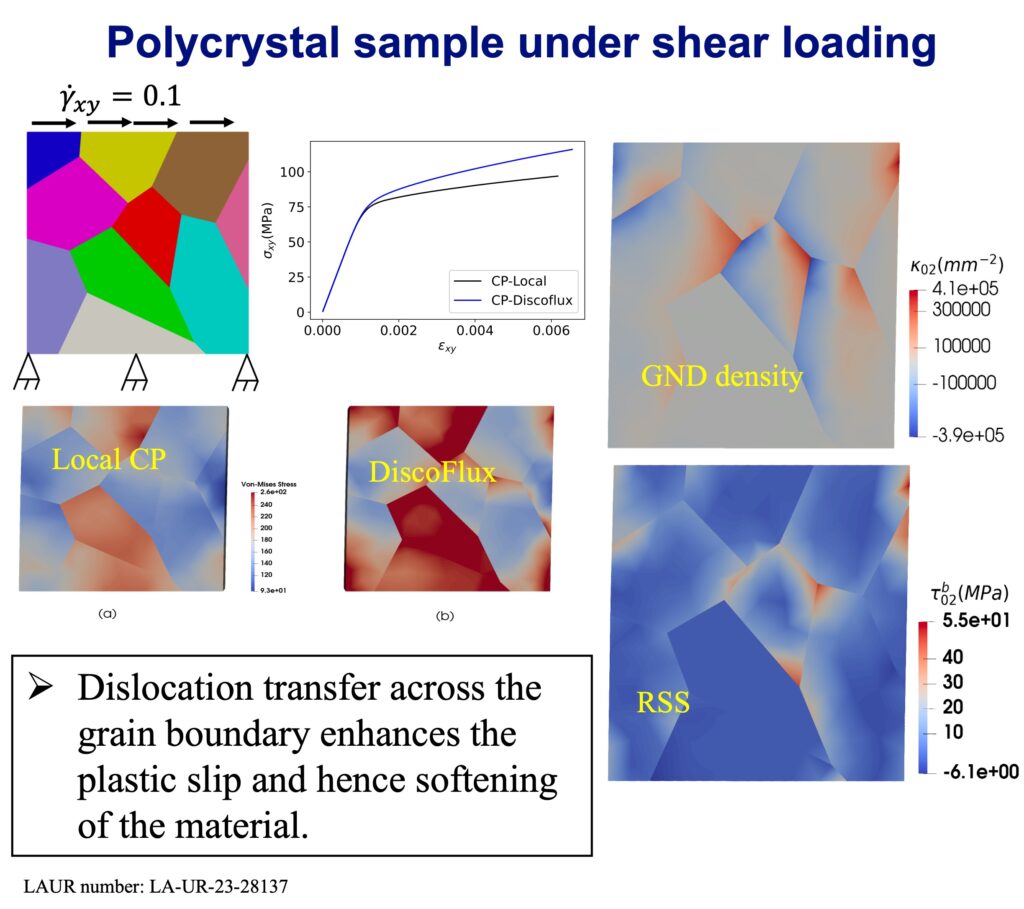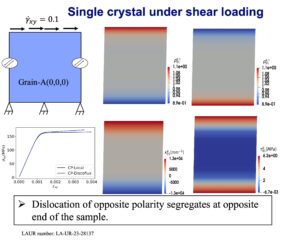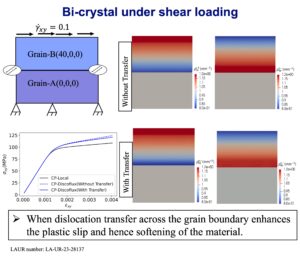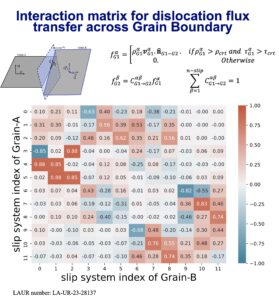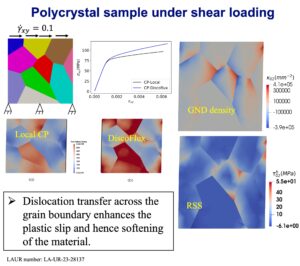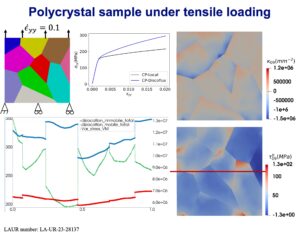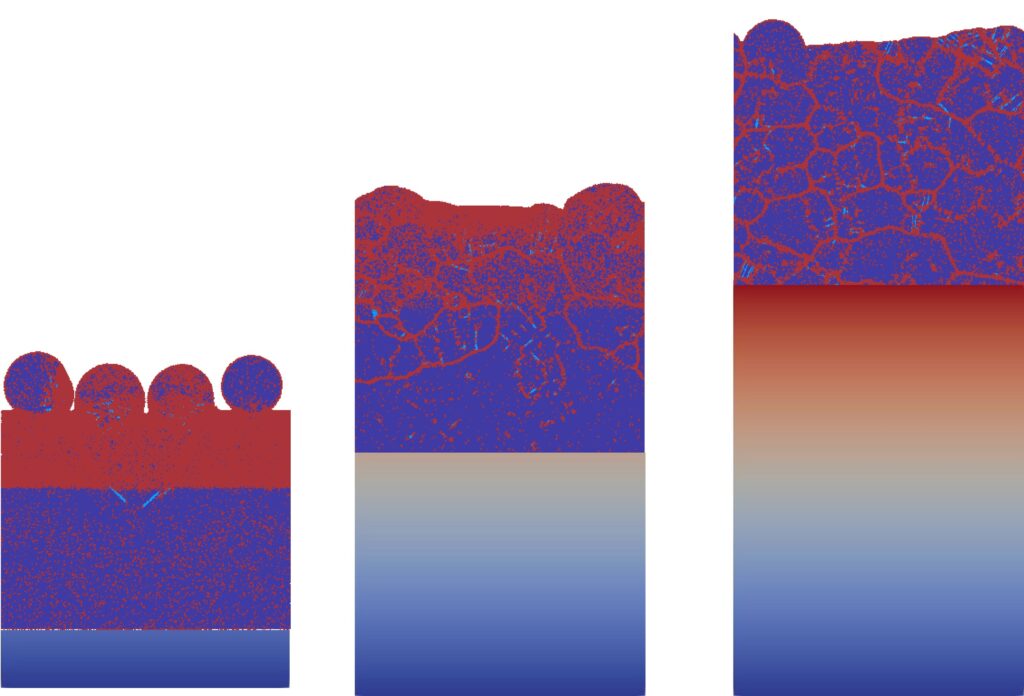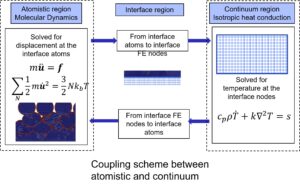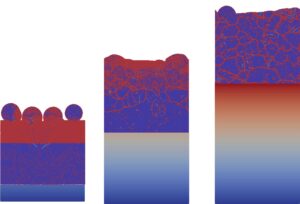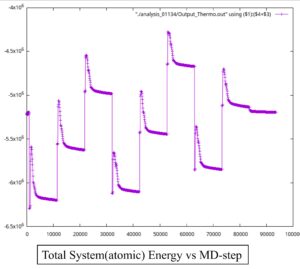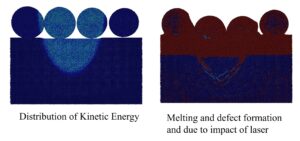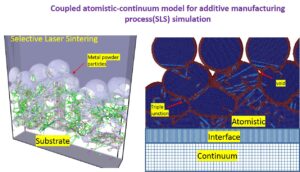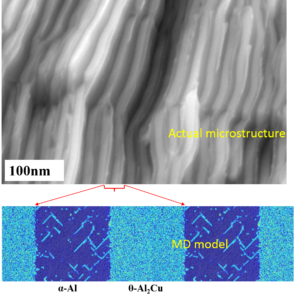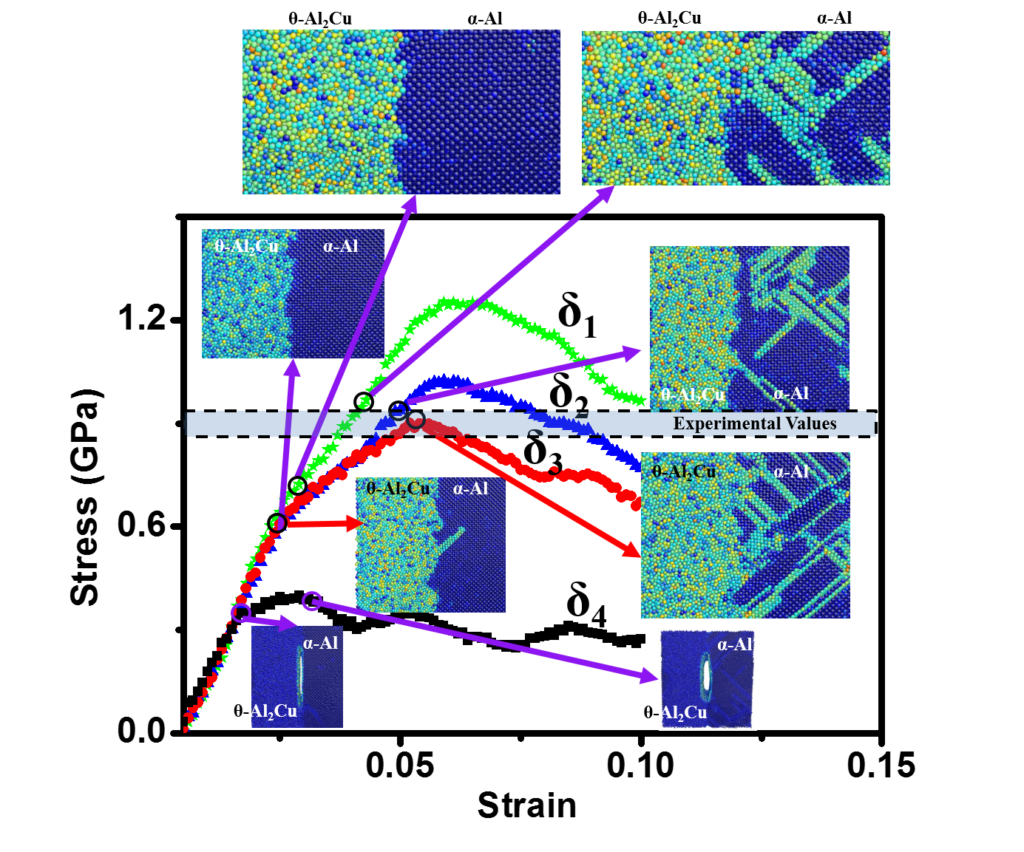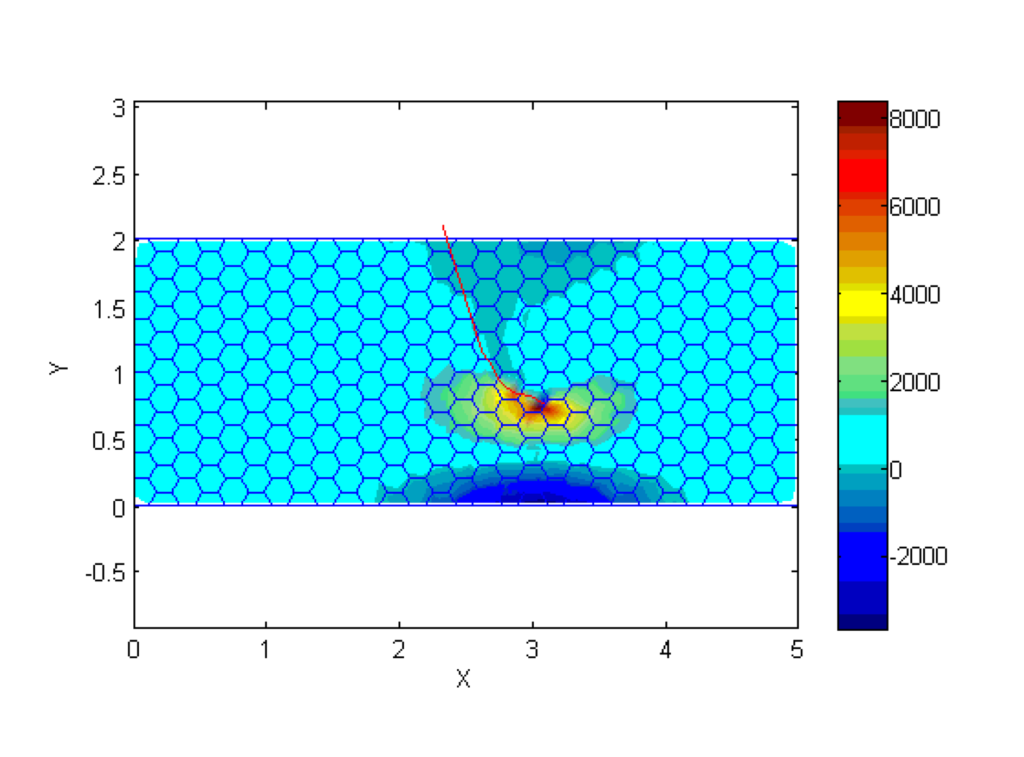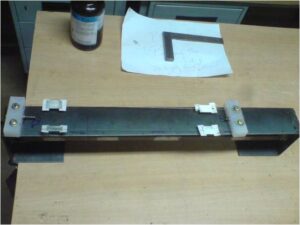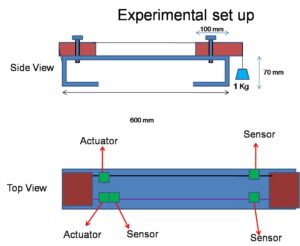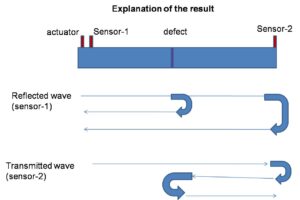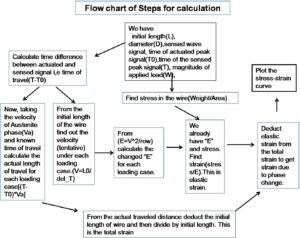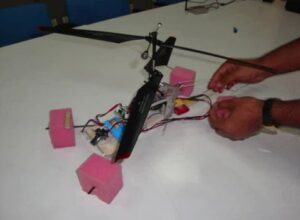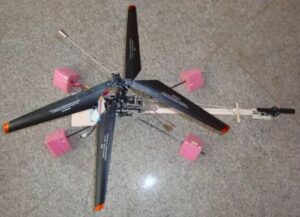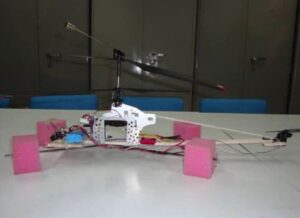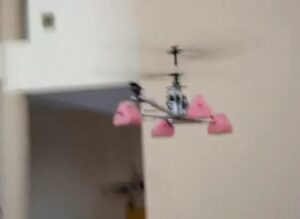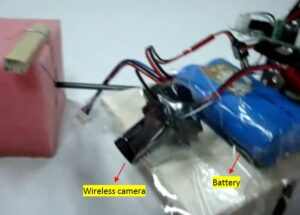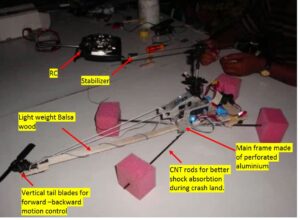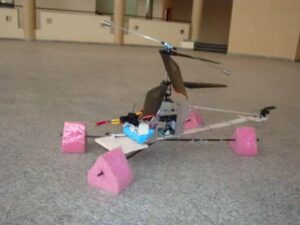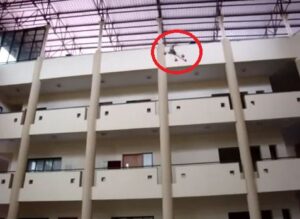Objective:
Development of a dislocation transport-based crystal plasticity material model and it’s implementation in the open source code MOOSE.
Special features of the model:
- Dislocation density evolution has both local and nonlocal terms in it.
- Nonocal evolution of dislocation density within a grain is achieved by transporting the dislocation density using advection equation(stabilized).
- A grain-boundary-geometry informed transfer matrix is used to determine the dislocation transfer across the grain boundary. The transfer can happen between two different slip-system as well as from positive to negative dislocation depending on the relative mis-orientation between the two grains.
Applications:
- Study the effect of the interface (Grain Boundary) on the mechanical properties of polycrystal metallic materials.
Objective:
- Model the additive manufacturing process where the physics of impact of the laser and subsequent melting and recrystallization will come from the Molecular Dynamics model and the already crystallized region is modeled as a continuum.
Special features of the model:
- MOOSE is coupled with LAMMPS in a concurrent fashion where LAMMPS is used as a library and MOOSE as the driver code.
- Moving the interface boundary to convert the atomistic domain into a continuum as more and more material is deposited, hence keeping the computational cost uniform during the deposition process.
- Phonon transfer mechanism at the interface.
- Characterization, quantification and transfer of dislocations from atomistic to continuum during the migration of the interface.
Applications:
- Study the development of defect microstructure and grain morphology in the additive manufacturing process (SLS and SLM).
**This project is still on-going. Identification of the Grain Boundary in the atomistic domain and transfer of that information while migrating the interface is yet to be achieved.
Objective:
Develop a concurrent model by coupling the Molecular Dynamics(MD) with Crystal plasticity Finite Element (CPFE) to study the brittle and ductile fracture of metallic materials.
Special features of the model:
- This is a surface coupled model, i.e, one layer of FE nodes at the interface region is connected with the corresponding clusters of atoms.
- A staggered solution technique is used to obtain the updated configuration at the end of each load increment.
- Kinematic compatibility and the traction reciprocity at the interface is enforced explicitly.
- Once the nucleated dislocations from the crack reach the interface, those dislocations are characterized and quantified to transfer to the continuum.
- Dislocation propagation is modeled by using the advection equation.
- An RKPM based meshless method is used to solve the dislocation propagation PDE on a fine distribution of particles.
Applications:
- Quantification of the evolution of a crack during brittle fracture.
- Quantification of the nucleated dislocations from a crack tip.
- Using the coupled model as a guiding tool to construct the phase-field energy functional for ductile fracture.
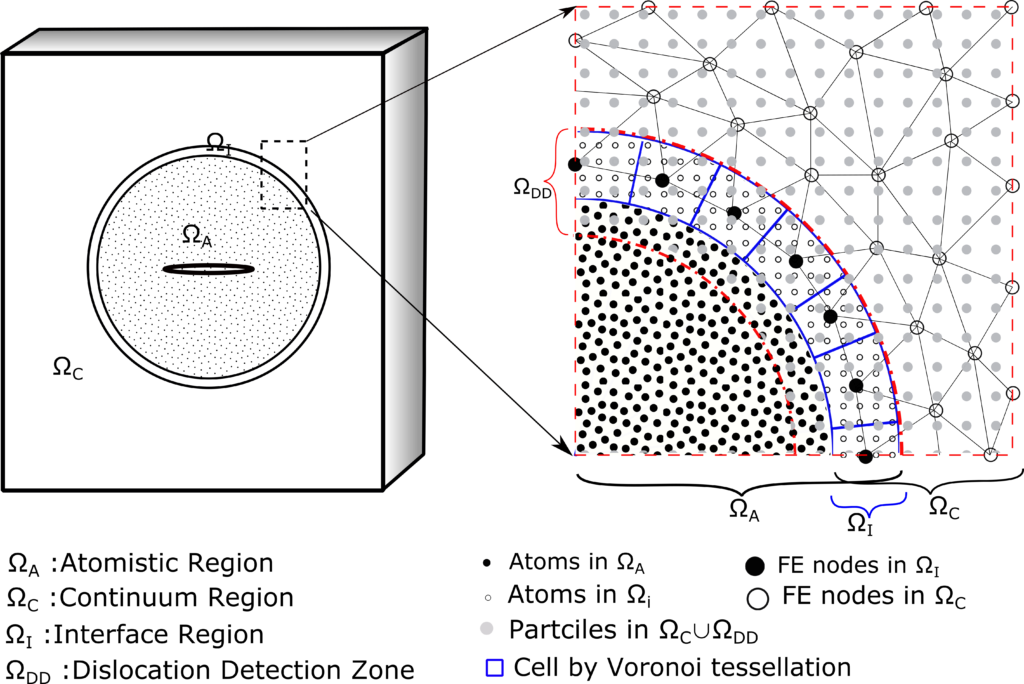
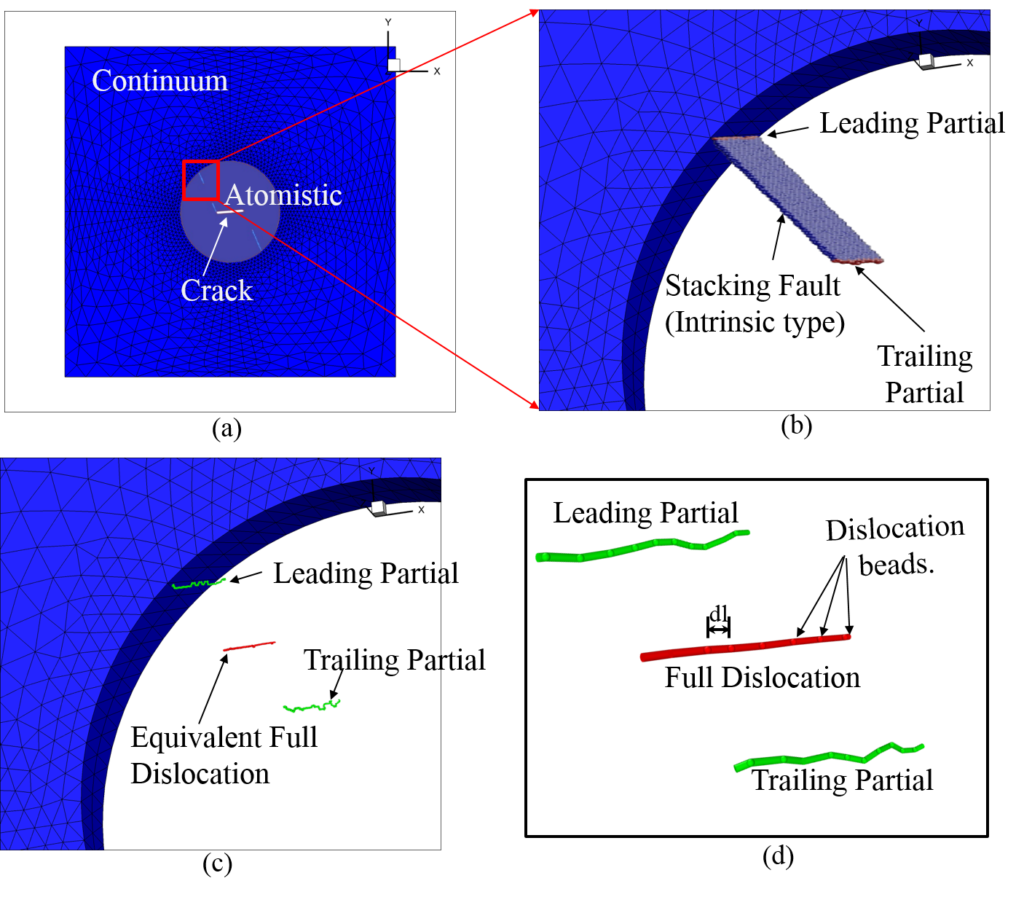
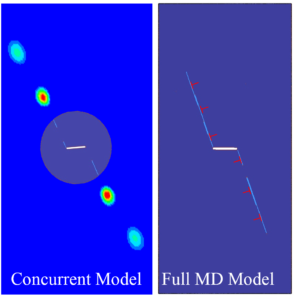
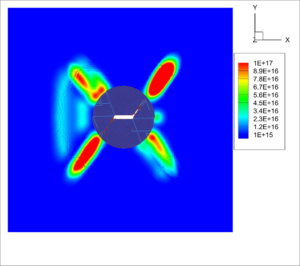
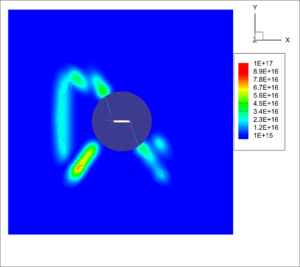
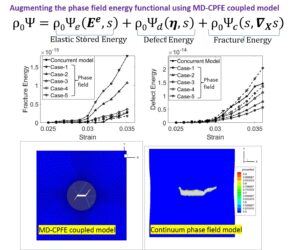
**If the above slide show is stuck in one image, click here
Publications:
- S. Chakraborty and S. Ghosh, “A Physics based Phase Field Energy Functional for Fracture Derived from Atomistic-Continuum Coupled Concurrent Model”, Journal of the Mechanics and Physics of Solids, 104563 (2021). https://doi.org/10.1016/j.jmps.2021.104563.
- S. Chakraborty and S. Ghosh. “A Concurrent Atomistic-Crystal Plasticity Multiscale Model for Crack Propagation in Crystalline Metallic Materials”, Computer Methods in Applied Mechanics and Engineering, 379,113748 (2021). https://doi.org/10.1016/j.cma.2021.113748
- S. Chakraborty. “Development of a self-consistent coupled atomistic-continuum model to study the brittle and ductile fracture in metallic materials”, Ph.D. thesis, Johns Hopkins University, 2020. URL http://jhir.library.jhu.edu/handle/1774.2/62541
- S. Chakraborty and S. Ghosh. “Hyperdynamics accelerated concurrent atomistic-continuum model for developing crack propagation models in elastic crystalline materials”, Computational Materials Science, 154:212-224 (2018). https://doi.org/10.1016/j.commatsci.2018.07.064 [Editor’s Choice]
Objective:
Molecular Dynamics is one of the most appropriate models to investigate the deformation mechanisms at the atomic scale. But MD has a severe limitation in the time scale. This time scale limitation demands a very high strain rate based loading for investigating the load-induced deformation mechanisms.
Special features of the model:
- Time-acceleration up to a factor of 10^4 at 300K is achieved.
- Model is successful in capturing the change in deformation mechanism from twin domination at high strain rate to dislocation domination at low strain rate for fcc nickel.
Publications:
- S. Chakraborty, J. Zhang and S. Ghosh. “Accelerated molecular dynamics simulations for characterizing plastic deformation in crystalline materials with cracks”, Computational Material Science, 121, 23-34 (2016). http://dx.doi.org/10.1016/j.commatsci.2016.04.026 [Editor’s Choice]
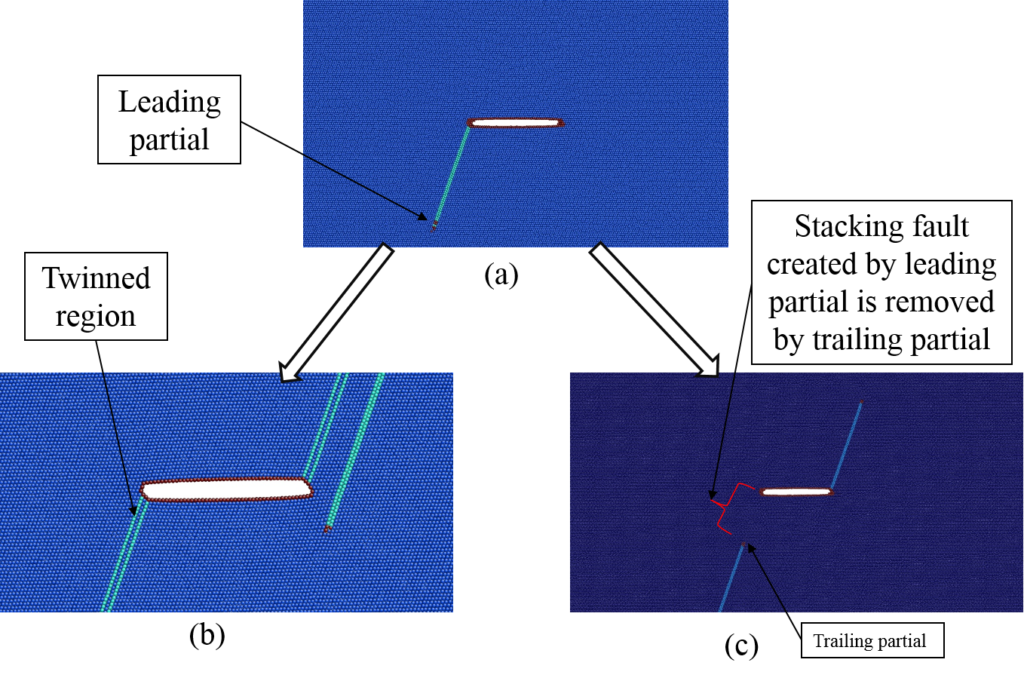
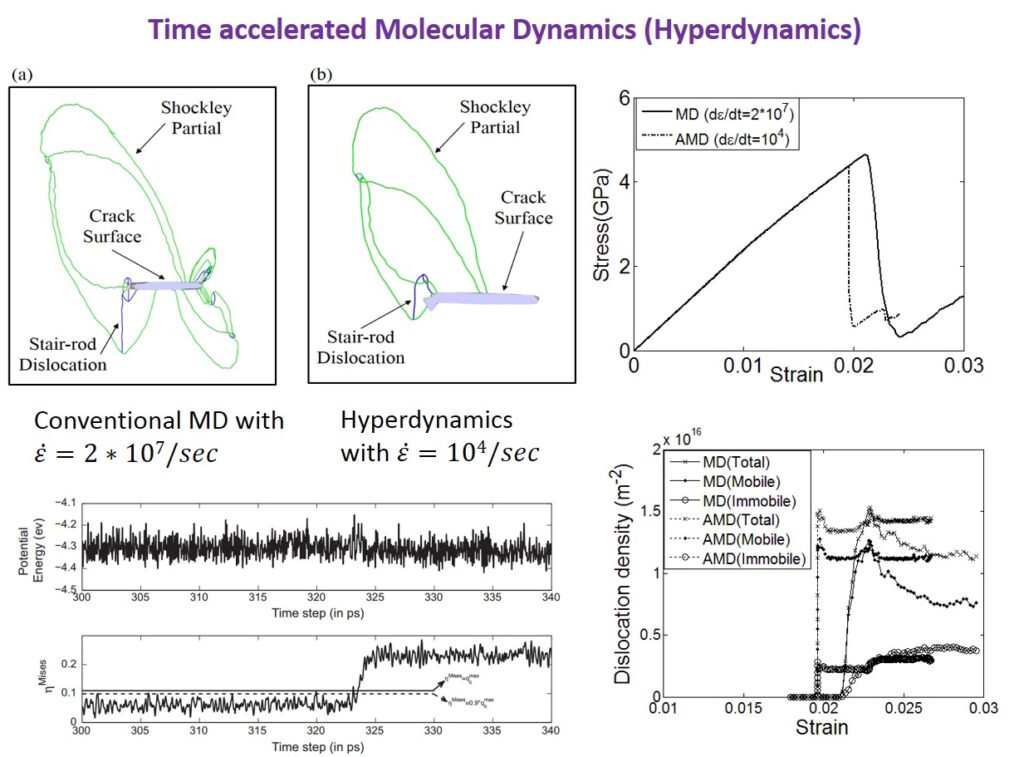
Modeling Al-Al2Cu eutactic alloy using Molecular Dynamics.
Publications:
- C.S.Tiwary, S. Chakraborty, D RoyMahaPatra, K Chattopadhyay. “Length-scale dependent mechanical properties of Al-Cu eutectic alloy: Molecular dynamics based model and its experimental verification”, Journal of Applied Physics, 115, 203502, 2014. http://dx.doi.org/10.1063/1.4879249
- C. S. Tiwary, J. Prakash, S. Chakraborty, D. R. Mahapatra & K.Chattopadhyay. “Subsurface deformation studies of aluminium during wear and its theoretical understanding using molecular dynamics”, Philosophical Magazine, 98:29, 2680-2700 (2018), https://doi.org/10.1080/14786435.2018.1502481
-
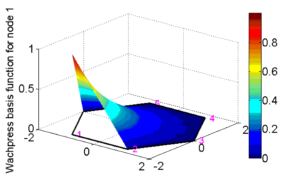
- Wachpress shape function(n=6)
-
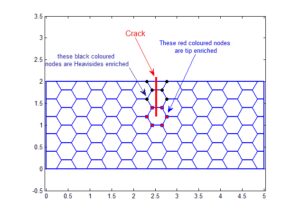
- Mode-I
-
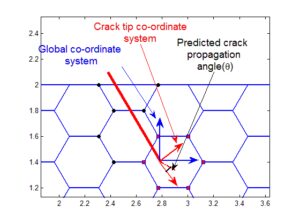
- Mixed Mode
-
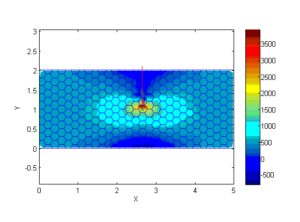
- Mode-I
-
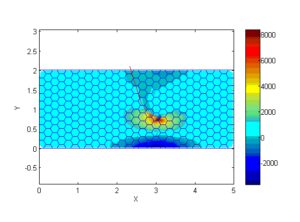
- Mixed Mode
-
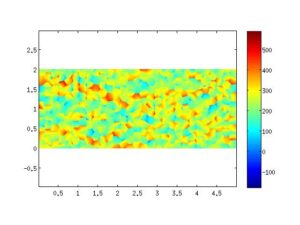
- PFEM for Hexagonal polycrystals
Publications:
- S. Chakraborty, S. Natarajan, S. Singh, D. Roy Mahapatra & S.P.A. Bordas, “Optimal Numerical Integration Schemes for a Family of Polygonal Finite Elements with Schwarz–Christoffel Conformal Mapping”, International Journal for Computational Methods in Engineering Science and Mechanics, 19:4, 283-304, (2018). https://doi.org/10.1080/15502287.2018.150221
- S. Chakraborty, “Optimal Integration Schemes for Polygonal Finite Element Method and eXtended Finite Element Method with Isotropic Homogenious and Polycrystaline Material”, ME Thesis, Indian Institute of Science, Bangalore(India), 2011. url: Thesis_ME_Subhendu
